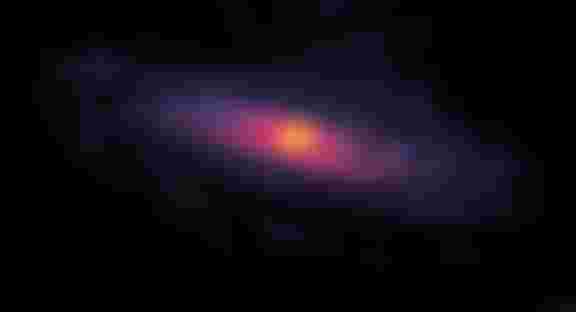Solar of the Solar System or Solar System means Sun, which comes from the ancient Roman language. In other words, the world formed around the sun is the solar system or solar system! But the universe that formed around another star must not have been called the solar system! Like the planets under the star Polaris, the satellite may be called Polar System! It's nothing to take seriously, just kidding! However, our solar system consists of a medium-sized star called the Sun and 8 planets orbiting it, their satellites, dwarf planets, meteors, asteroids, comets, etc.!

Fictional image of solar nebula *
We know that all of this revolves around the sun at a regular speed, but primitive civilization thought that the earth was the center of everything and that other stars, the sun, and the planets revolved around it. The sun is the source of all energy in our solar system. Energy has been spreading in the form of heat and light since the beginning of creation. Our Sun is located in the Milky Way galaxy, and it is one of the 20,000 billion stars in this galaxy. The sun is orbiting the center of this galaxy with its world! Isn't that weird?
Origin of the solar system: According to most scientists and researchers, the origin of our solar system is from the solar nebula. Huge piles of gas begin to gather in one place under the pull of gravity, then the original structure of the sun is formed in the center. The extra gases around this primordial sun take on a disc-like shape as they revolve. Later most of the gaseous components of this gaseous disk are attracted to the sun, but in some places some of the gases condense again to form planetary particles. All the planets, satellites, asteroids and comets together are called planet particles or planetesimal! When the sun is fully formed and begins to burn in the process of fusion, the effect of the solar wind blows away the extra light gases in the vicinity such as hydrogen, helium, etc. And the lining of these gases is removed from the planets near the sun. Due to this 4 planets close to the sun are difficult. They are called terrestrial planets. But since Mars, the rest of the planets have less influence of the solar wind, they remain in our solar system as gas giants!

The relative size of the planets. *
Discovery of the solar system: The solar system was from the beginning, so what is there to discover? Yes, already. But then we did not have the necessary materials to observe it, and so people did not understand the difference between stars and planets! For hundreds of years, people have seen tiny dots of light float in the night sky among the stars! The ancient Greeks named it Planets, which means "traveler" in Bengali. Ancient people knew about Mercury, Venus, Mars, Jupiter and Saturn. Later, after the discovery of the telescope, he came to know about asteroids, Uranus, Neptune and Pluto. Pluto was known as the planet of our solar system until 2006, when it was downgraded as a dwarf planet. Hundreds of such dwarf planets have been found in our solar system so far in the Kuiper Belt!

The type of rotation of the planets. *
Elements of the solar system: The sun is the main element of our solar system. The Sun alone carries 99.6% of the total mass of the solar system. Other planets, satellites, etc. with the remaining 0.2%! Arranged away from the Sun, the six planets are Mercury, Venus, Earth, Mars, Jupiter, Saturn, Uranus and Neptune. Mercury, Venus, Earth, Mars, Jupiter, Saturn, Uranus and Neptune. All but the earth are named after Roman gods and goddesses. That means mythology and astronomy are inextricably linked! Most of the planets are orbiting one or more of their satellites! I will write details about all the planets in the next episode. There are asteroids across a large space between Mars and Jupiter. Asteroids are rocks of irregular size much smaller than planets. They can range from very small to several kilometers long. Another element of the solar system, the comet is a huge mass of ice and rock! As it gets closer to the sun, the ice in its center melts into gas, and it is blown away by the solar wind. Then while running, it seems that the tail has grown behind it!


